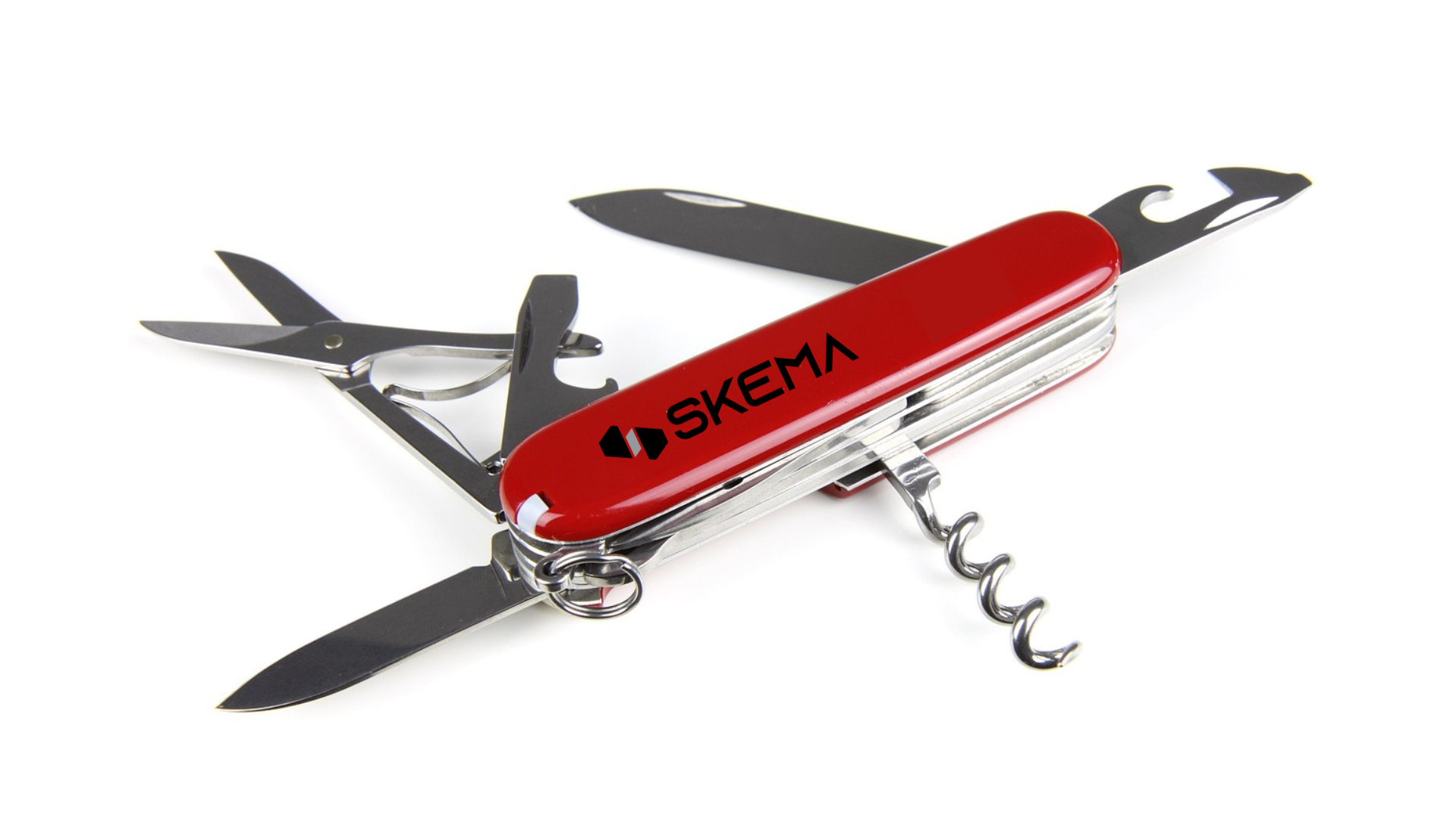Why AEC Needs a Swiss Army Knife: The Power of Tool Chains
Have you ever sat through the endless credits of a blockbuster movie or video game and been blown away by the sheer number of people it took to create it? The producers, designers, artists, programmers — all working together to bring a vision to life. It’s a miracle of coordination, fueled by sophisticated tools and seamless workflows.
Now imagine trying to make that same movie or game with tools that don’t talk to each other, losing crucial content and data at every handoff. Chaos, right? Unfortunately, that’s the challenge AEC professionals face every day.
What can AEC learn from the movie and gaming industry?
Building Better with Tool Chains
The movie and gaming industries live in the world of tool chains. Each project passes through many hands and many roles, each using the tools of their choice. Designers collaborate closely with artists, programmers, and other team members to bring their vision to life through iterative prototyping and many other complex tasks using automated pipelines, software integrations, scalable workflows, and efficient asset management — all while expecting the tools to work seamlessly.
In AEC, historically, building designers haven’t had tool chains like they do in movies and gaming. The ramification is that we lose content and data every time we’re trying to move our designs out of one tool, say, Rhino or SketchUp, and move it into another tool like ArchiCAD or Revit for the next phase. Because design is iterative, the problem snowballs. Which means that, as we move forward in design, we get more (and more!) data loss.
If you’ve gotten used to the frustrations of data wrangling to get your project over the finish line — whether you’re deep into the technical aspects or just wondering what could possibly be taking so long — I’m here to say: there is a better way.
Skema is designed to work exactly like the type of tool chain a movie studio or gaming studio would use, where they are going back and forth between applications without going through any translations. As a Swiss Army knife, Skema is able to seamlessly connect and support the various tools that firms apply in their projects.
Case in point: the SketchUp-Skema-Revit tool chain, which we recently introduced as Skema for SketchUp. And we’ve got more on the horizon.
Be the First to Hear About our Skema to Rhino Integration
No Manual Intervention Required
Skema isn’t the only solution available for BIM workflows, but it’s the only tool that is designed to support a native-data tool chain, instead of using object types and mapping to try to translate data between systems.
For instance, as a comparison, Speckle provides powerful data exchange capabilities, enabling users to map objects between different BIM systems. However, a BIM manager or someone else will have to complete the mapping process in order to avoid data losses.
Skema focuses on BIM knowledge management, using and directly storing native Revit objects. Its Design Catalog system doesn’t rely on data translation or mapping, thus ensuring high-quality BIM data without manual intervention. This capability makes Skema very well suited for firms seeking more accurate and efficient design-to-BIM processes.
And because of the way we’ve designed Skema — with our team’s tribal knowledge of Revit — everything done in Skema produces native objects in Revit with your firm-specific metadata and properties intact.
Skema embraces the principles of knowledge reuse and interoperability:
Integrated Tool Chains: Seamless data flow, no translations or loss.
Knowledge Reuse: Designs that leverage valuable insights from past projects.
Native Revit Objects: Standards compatibility, no extra steps.
This focus on automation and seamless integration makes Skema a natural choice for firms aiming to wring out inefficiencies in their design workflows.
Tool chains are the answer to our industry’s inefficiency problems. Skema stands out by turning knowledge reuse and metadata management into competitive advantages, ensuring architects can meet deliverable demands while maintaining data integrity.
A Force Multiplier for Design
Technology is a force multiplier. We apply it in order to gain leverage, depending on what task we are trying to perform as part of a project.
Different roles use different technologies to get different leverage. Handoffs between roles have meant a precipitous drop-off in content and data integrity (see my recent blog comparing Content-based vs. Script-based methodologies). Constantly moving data back and forth between APIs and data models on platforms is just creating a lot of inefficiencies and headaches for all of us.
This is the reason why the tool chain is so important. And, of course, we need to think not only about the tool chain and the workflows that it embodies, but the fact that AI is going to be right in the middle of it.
We can take a more strategic focus on embracing tools that are best for each role. As Allister Lewis, founder of the ADDD Marketplace and author of the Generative Design Cheat Sheet, wrote in AEC Magazine, “AEC professionals have the opportunity to explore and embrace these tools as allies in their work, with the opportunity to lead to better client outcomes.”
I’m interested in creating tool chains that have high data fidelity. That don’t waste time. That don’t create busy work and rework for people. That don’t destroy value.
That’s the big idea behind this type of tool chain. It’s about the workflow and the efficiency of the system embodied in the workflow. With a well-oiled tool chain, we can get much better answers to the questions that the owners care about as far as the cost delivery value chain.


